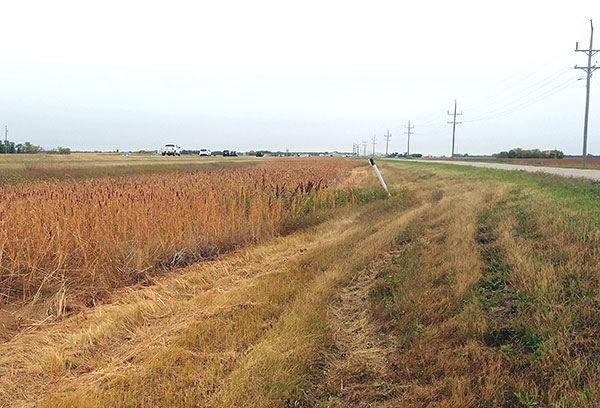Lake Winnipeg Waterways, Waste to Wonder!
Organization: Seine-Rat River Conservation District
Location:
Three Conservation Districts in Manitoba; Seine-Rat River Conservation District (Steinbach and area R5G 0T5), Whitemud Conservation District (Neepawa and area R0J 1H0), and East Interlake Conservation District (Gimli and area R0C 1B0).
Country: Canada
Other Organizations Involved:
- Whitemud Conservation District
- East Interlake Conservation District
- International Institute of Sustainable Development
- Lake Winnipeg Foundation

Background
Lake Winnipeg was named the most threatened lake in 2013 by the Global Nature Fund out of Germany. This problem is due to excessive nutrients entering the lake from urban, agricultural and natural areas. These nutrients, and phosphorous in particular, help plants grow on the land but when phosphorous reaches our waterways it contributes vastly to our declining Lake Winnipeg ecosystem. Conservation Districts work hard to provide best management practices for both agricultural and urban areas, but more needs to be done. Mitigating natural sources of phosphorous from entering our waterways is a very new and innovative approach in Manitoba. Currently, when vegetation in a waterway is mowed down, the debris is left on site to decompose. This decomposition releases the phosphorous back into the waterways. The latest research from the International Institute for Sustainable Development shows that one ton of cattails has the ability to sequester between 2.2 to 4.4 pounds of phosphorous and yields 2-5 tons of cattails per mile. That is enough to make a big difference if everyone did it!
Goals
To remove up to 13,200 pounds of phosphorous from 600 miles of waterways leading to Lake Winnipeg. Our project simply removes the mowed vegetative debris from the waterways and implements an alternative use for the waste we call biomass. This innovative, yet simple approach is aimed to support more sustainable economic development on the rural and urban landscapes by harvesting the wasted biomass products into a useful and desirable product. This will hopefully create a pattern of more sustainable land and waterway management as well as building educational relationships between landowners, industry, researchers and waterway managers for continued biomass harvesting practices.
Main activities
The three Conservation Districts will host six winter workshops to present the project to the local landowners, industry and waterway managers in order to gain support for people both willing to do the harvesting work in the late summer and fall and also wanting to use the harvested cattails on their farm for cattle bedding, in their community for heating, as compost, green manure or another innovative use we have not discovered yet. When the biomass (cattails and other ditch vegetation) is ready to be harvested (ie: the ditches need mowing), the project partners will work together to coordinate the biomass harvesting with the waterway managers in order to bale and haul the biomass out of the waterway. The bales will be used immediately or stockpiled appropriately and sustainably for future use. The Lake Winnipeg Foundation will be assisting with their Community Based Monitoring program to test the phosphorous on the tributaries within the project area. The International Institute for Sustainable Development will be assisting with technical support along with the research, development and analysis of the innovative biomass uses, while calculating the amount of phosphorous captured.
Results
This pilot project will not only showcase the removal of up to 13,200 pounds of phosphorus from 600 miles of waterways leading to Lake Winnipeg, but also create a strong network of sustainable landowners, industry leaders, researchers and waterway managers to lead sustainable waterway management in Manitoba. A final report document will be compiled to ensure the project can be reproduced anywhere in the world.